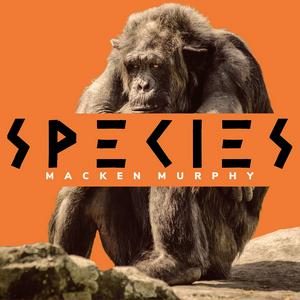Pilled | Louis Bachaud
A deep dive into the manosphere, with the scholar who knows it best, Louis Bachaud. The manosphere is a constellation of 5 loosely affiliated communities, including pick-up artists (PUAs), men's rights activists (MRAs), "Men Going Their Own Way" (MGTOW), incels (the "Black Pill" communiy), and the "Red Pill" community. Louis details the history of the manosphere, describes the current factions and their differences, and guides us through their use and misuse of science, especially evolutionary psychology. The episode opens with a systematic critique of the manosphere, and the interview starts around 34 minutes in. Enjoy. Recommended background, especially for critiques of the manosphere: - Bachaud, L., & Johns, S. E. (2023). The use and misuse of evolutionary psychology in online manosphere communities: The case of female mating strategies. Evolutionary Human Sciences, 5, e28. For the size and direction of sex differences, see: - Archer, J. (2019). The reality and evolutionary significance of human psychological sex differences. Biological Reviews, 94(4), 1381-1415. - Stewart-Williams, S., Butler, C. A., & Thomas, A. G. (2017). Sexual history and present attractiveness: People want a mate with a bit of a past, but not too much. The Journal of Sex Research, 54(9), 1097-1105. - Schmitt, D. P. (2005). Sociosexuality from Argentina to Zimbabwe: A 48-nation study of sex, culture, and strategies of human mating. Behavioral and Brain sciences, 28(2), 247-275. - Buss, D. M. (1989). Sex differences in human mate preferences: Evolutionary hypotheses tested in 37 cultures. Behavioral and brain sciences, 12(1), 1-14. For extra-pair paternity: - Wolf, M., Musch, J., Enczmann, J., & Fischer, J. (2012). Estimating the prevalence of nonpaternity in Germany. Human Nature, 23, 208-217. - Anderson, K. (2006). How well does paternity confidence match actual paternity? Evidence from worldwide nonpaternity rates. Current anthropology, 47(3), 513-520. - Bellis, M. A., Hughes, K., Hughes, S., & Ashton, J. R. (2005). Measuring paternal discrepancy and its public health consequences. Journal of Epidemiology & Community Health, 59(9), 749-754. For age gaps: - Conroy-Beam, D., & Buss, D. M. (2019). Why is age so important in human mating? Evolved age preferences and their influences on multiple mating behaviors. Evolutionary Behavioral Sciences, 13(2), 127. - Antfolk, J., Salo, B., Alanko, K., Bergen, E., Corander, J., Sandnabba, N. K., & Santtila, P. (2015). Women's and men's sexual preferences and activities with respect to the partner's age: Evidence for female choice. Evolution and Human Behavior, 36(1), 73-79. - Buunk, B. P., Dijkstra, P., Kenrick, D. T., & Warntjes, A. (2001). Age preferences for mates as related to gender, own age, and involvement level. Evolution and Human Behavior, 22(4), 241-250.
